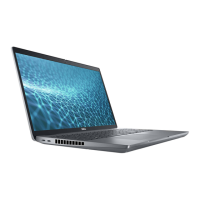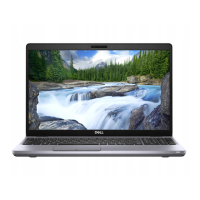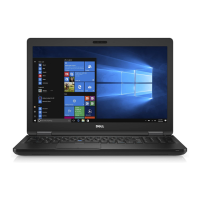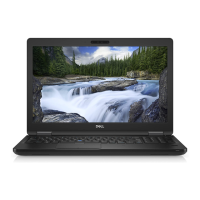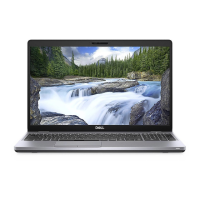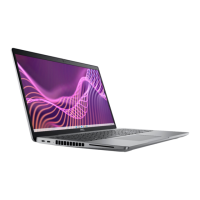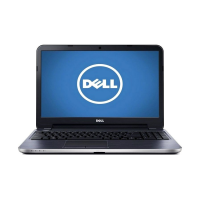What to do if there is TPM detection failure on Dell Laptop?
- AAllison GreenSep 10, 2025
If there is a TPM detection failure on your Dell Laptop, replace the system board.
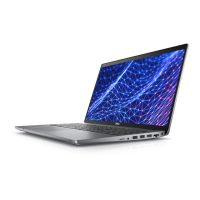
What to do if there is TPM detection failure on Dell Laptop?
If there is a TPM detection failure on your Dell Laptop, replace the system board.
What to do if there is Power rail failure on Dell Laptop?
If there is a Power rail failure on your Dell Laptop, replace the system board.
What to do if there is Unrecoverable SPI Flash Failure on Dell Laptop?
If there is an Unrecoverable SPI Flash Failure on your Dell Laptop, replace the system board.
What to do if Timeout waiting on ME to reply to HECI message on Dell Latitude 5530?
If your Dell Laptop is timing out while waiting on ME to reply to a HECI message, replace the system board.
| Form factor | Clamshell |
|---|---|
| Product type | Laptop |
| Product color | Gray |
| Intel® vPro™ Platform Eligibility | Yes |
| Panel type | WVA |
| Color gamut | 45 % |
| Pixel pitch | 0.179 x 0.179 mm |
| Pixel density | 141 ppi |
| RGB color space | NTSC |
| Display diagonal | 15.6 \ |
| Anti-glare screen | Always gives an optimal view, even in direct sunlight. |
| Display brightness | 250 cd/m² |
| Native aspect ratio | 16:9 |
| Maximum refresh rate | 60 Hz |
| Contrast ratio (typical) | 700:1 |
| Display response rise/fall | 25 ms |
| Pointing device | Clickpad |
| Keyboard language | Belgian |
| Keyboard number of keys | 100 |
| Memory slots | 2x SO-DIMM |
| Internal memory | 16 GB |
| Memory channels | Dual-channel |
| Memory clock speed | 3200 MHz |
| Memory form factor | SO-DIMM |
| Internal memory type | DDR4-SDRAM |
| Maximum internal memory | 64 GB |
| Memory layout (slots x size) | 2 x 8 GB |
| SSD capacity | The Solid State Drive's storage capacity in Gigabytes. |
| SSD interface | PCI Express |
| Storage media | SSD |
| SSD form factor | M.2 |
| Total storage capacity | 512 GB |
| Compatible memory cards | MicroSD (TransFlash), MicroSDHC, MicroSDXC |
| Number of SSDs installed | 1 |
| Battery weight | 230 g |
| Battery voltage | 7.6 V |
| Battery capacity | 58 Wh |
| Battery recharge time | 4 h |
| Number of battery cells | 4 |
| AC adapter power | 65 W |
| AC adapter frequency | 50/60 Hz |
| USB charging current | 3.25 A |
| USB charging voltage | 20, 5, 9, 15 V |
| AC adapter input voltage | 100 - 240 V |
| Trusted Platform Module (TPM) version | 2.0 |
| Audio chip | Realtek ALC3204 |
| Audio system | MaxxAudio Pro |
| Speaker power | 2 W |
| Number of built-in speakers | 2 |
| Privacy type | Privacy shutter |
| Video capturing speed | 30 fps |
| Front camera resolution (numeric) | 0.92 MP |
| WWAN | Upgradable |
| Antenna type | 2x2 |
| Wi-Fi standards | 802.11a, Wi-Fi 5 (802.11ac), 802.11b, 802.11g, Wi-Fi 4 (802.11n), Wi-Fi 6E (802.11ax) |
| Top Wi-Fi standard | Wi-Fi 6E (802.11ax) |
| WLAN controller model | Intel Wi-Fi 6E AX211 |
| Wi-Fi data rate (max) | 2400 Mbit/s |
| Ethernet LAN data rates | 10, 100, 1000 Mbit/s |
| WLAN controller manufacturer | Intel |
| Charging port type | USB Type-C |
| USB 2.0 ports quantity | 0 |
| Cables included | AC |
| Operating shock | 140 G |
| Operating altitude | -15.2 - 3048 m |
| Non-operating shock | 160 G |
| Operating vibration | 0.66 G |
| Non-operating altitude | -15.2 - 10668 m |
| Non-operating vibration | 1.3 G |
| Storage temperature (T-T) | -40 - 65 °C |
| Operating temperature (T-T) | 0 - 40 °C |
| Storage relative humidity (H-H) | 0 - 95 % |
| Operating relative humidity (H-H) | 10 - 90 % |
| Processor cache | 12 MB |
| Processor cores | 10 |
| Processor model | i5-1235U |
| Processor family | Intel® Core™ i5 |
| Processor threads | 12 |
| Processor frequency | - GHz |
| Configurable TDP-down | 12 W |
| Processor boost frequency | 4.4 GHz |
| Discrete graphics card model | Not available |
| On-board graphics card model | Intel Iris Xe Graphics |
| Trial software | No Microsoft Office License Included 30 day Trial Offer Only |
| Operating system language | DEU, DUT, ENG, FRE, ITA |
| Operating system architecture | 64-bit |
| Depth | 233.3 mm |
|---|---|
| Width | 357.8 mm |
| Weight | 1590 g |
| Height (rear) | 22.15 mm |
| Height (front) | 20.77 mm |
Guidelines to protect computer from damage and ensure personal safety.
Steps to prepare the computer before performing internal procedures.
Primary steps to take before any disassembly or reassembly procedures.
Importance of ESD protection when handling electronic components to prevent damage.
Description of the unmonitored Field Service kit components for ESD protection.
Steps to follow after completing internal computer maintenance tasks.
Information regarding BitLocker and its impact on BIOS updates.
List of tools required for performing the component removal and installation procedures.
Details on screw types, quantities, and images for each component.
Visual identification of the primary internal components of the Latitude 5530 laptop.
Procedures for removing and installing the SIM card.
Procedures for removing and installing the microSD card.
Procedures for removing and installing the computer's bottom base cover.
Procedures for removing and installing the Wireless Local Area Network (WLAN) card.
Procedures for removing and installing the Wireless Wide Area Network (WWAN) card.
Procedures for removing and installing M.2 solid-state drives.
Procedures for removing and installing the system memory modules (RAM).
Precautions and procedures for handling and replacing the laptop battery.
Procedures for removing and installing the battery cable.
Procedures for removing and installing the internal chassis frame.
Procedures for removing and installing the LED board.
Procedures for removing and installing the computer's cooling system fan.
Procedures for removing and installing the CPU heat sink.
Procedures for removing and installing the laptop's internal speakers.
Procedures for removing and installing the main system board.
Procedures for removing and installing the power-button board.
Procedures for removing and installing the smart card reader.
Procedures for removing and installing the main keyboard assembly.
Procedures for removing and installing the keyboard bracket.
Procedures for removing and installing the complete display assembly.
Procedures for removing and installing the display screen bezel.
Procedures for removing and installing the actual display panel.
Procedures for removing and installing the display hinges.
Procedures for removing and installing the camera and microphone module.
Procedures for removing and installing the infrared camera module.
Procedures for removing and installing the eDP/display cable.
Procedures for removing and installing the sensor board.
Procedures for removing and installing the display back cover.
Procedures for removing and installing the dummy SIM-card slot filler.
Procedures for removing and installing the palm-rest assembly.
Explanation of the BIOS and its fundamental role in computer operation.
Step-by-step instructions on how to access the BIOS setup utility.
Key combinations and functions used for navigating within the BIOS setup menu.
Instructions for accessing and utilizing the one-time boot menu options.
Safety guidelines and procedures for managing swollen laptop batteries.
Procedure to initiate and run pre-boot diagnostics for system performance.
Details on the system board's built-in self-test diagnostics.
Procedure to test the LCD power rail for potential issues.
Explanation of system diagnostic light patterns and their meanings.
Steps to recover the operating system when it fails to boot properly.
Procedure to reset the system's Real-Time Clock.
Description of the automated RTC reset feature for specific failure scenarios.
Recommendations for creating backup media and recovery options for the OS.
Procedure to troubleshoot and resolve WiFi connectivity problems.
Procedure to drain residual static electricity from the computer.
Information on various self-help resources available for Dell products.
Methods and contact information for reaching Dell support services.
